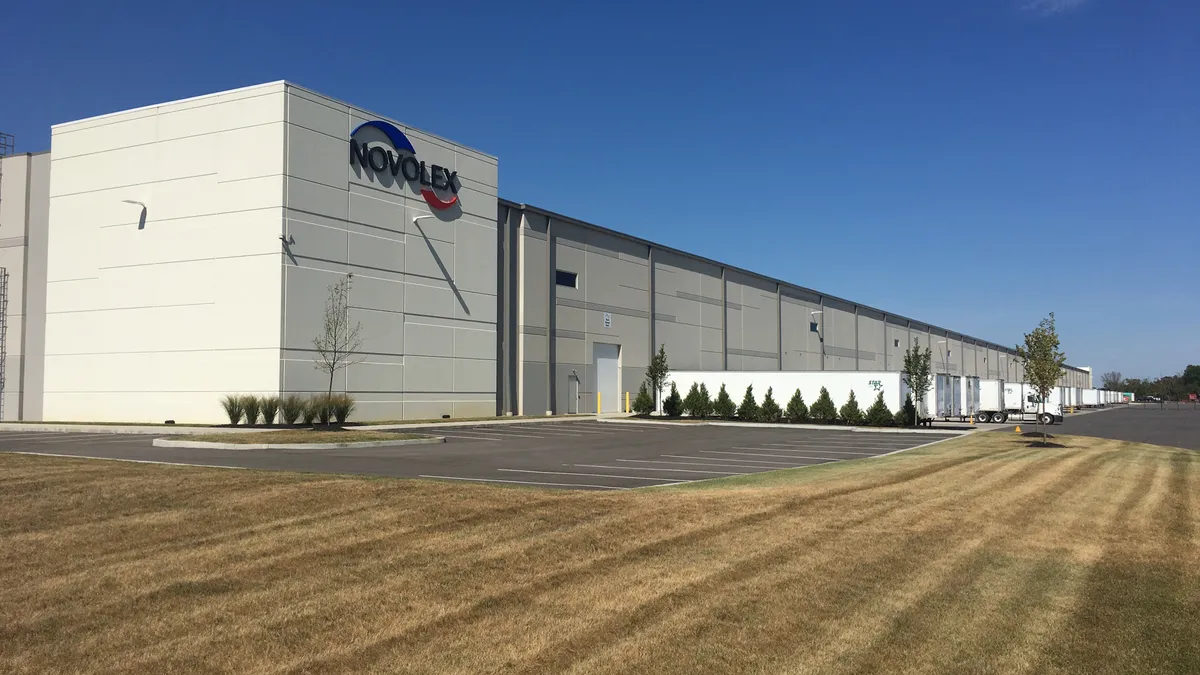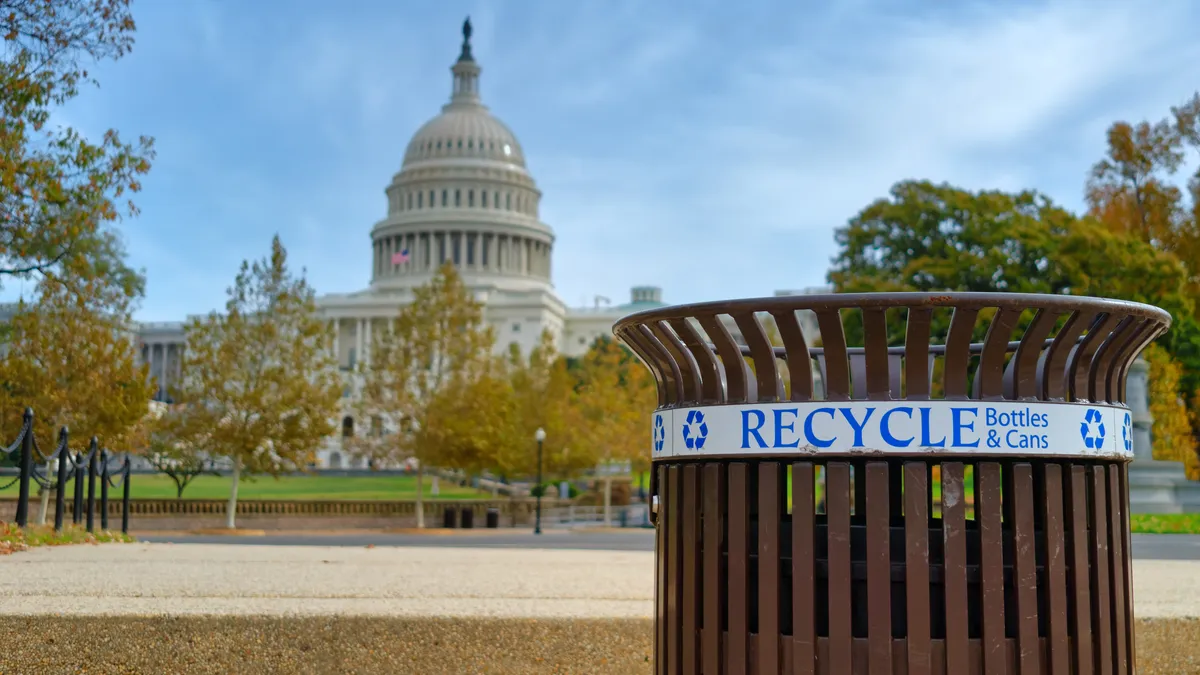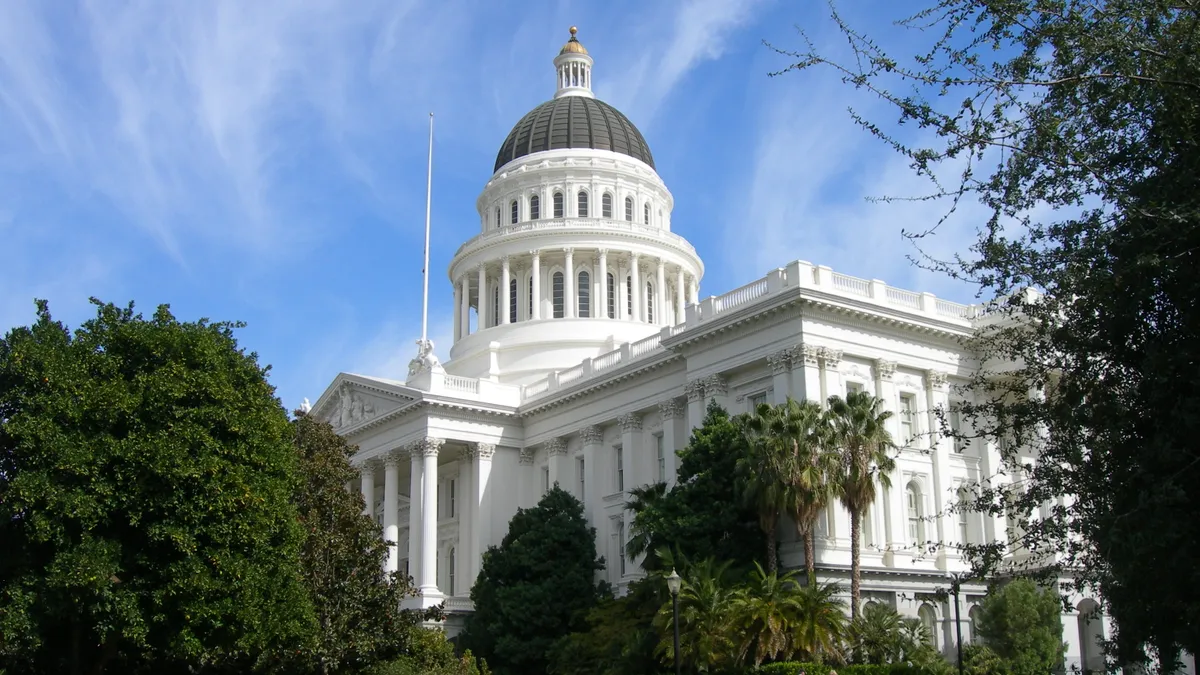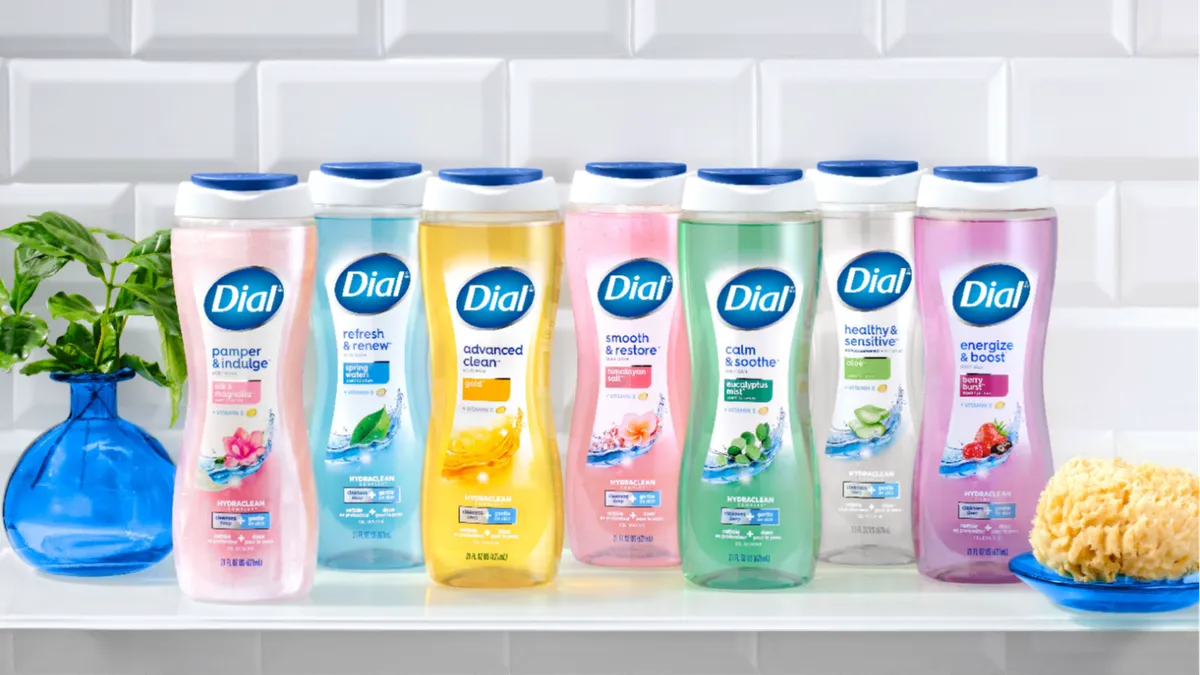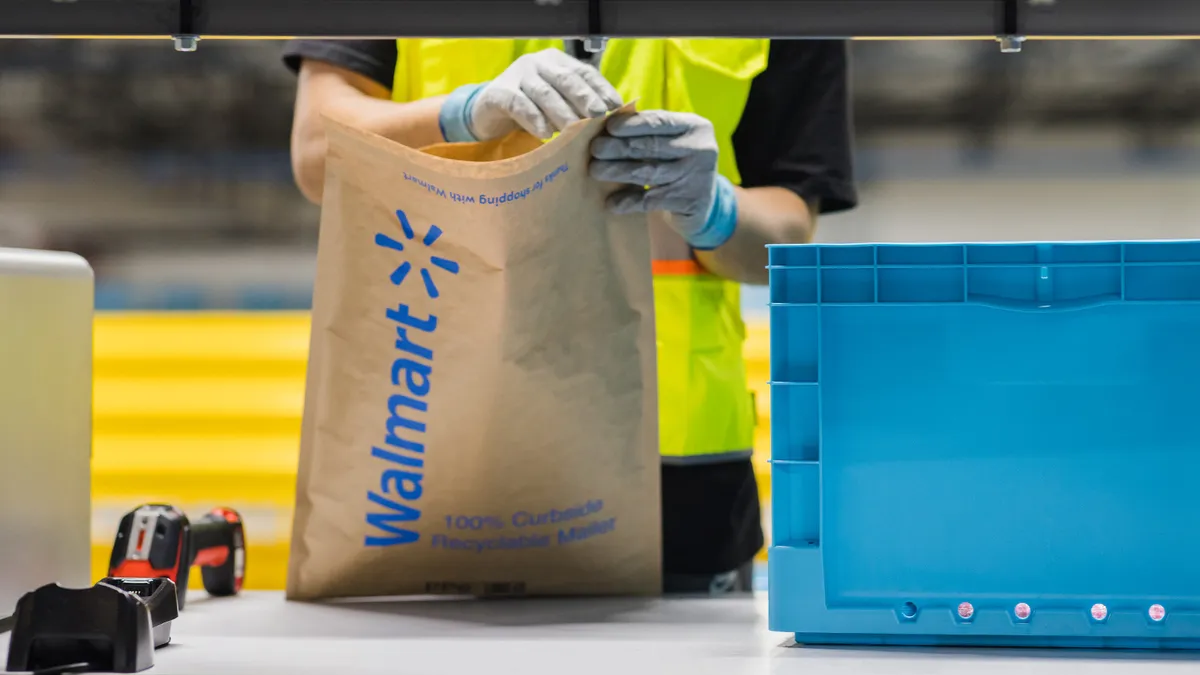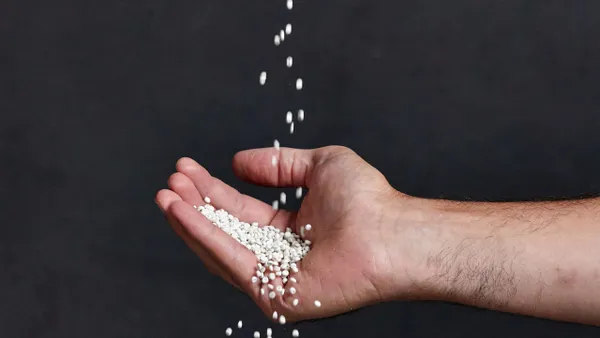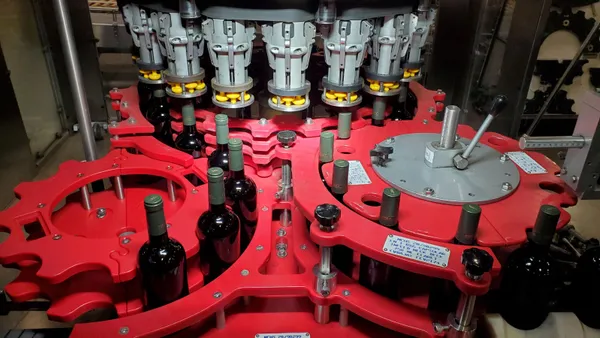Novolex introduced new metrics for tracking waste disposal and made an investment to increase recycling capacity in 2022, according to the company’s annual sustainability report released Thursday. But emissions reductions remained flat, and Novolex saw limited movement on using materials from renewable, bio-based or postconsumer recycled sources.
This marks the plastic, fiber and bio-based packaging manufacturer’s fifth sustainability report. In 2020, it worked with a third party to conduct its first materiality assessment to identify nine high-priority topics — including waste management, materials and emissions — and the results continued to guide the most recent report, namely changes in waste and recycling.
Waste and recycling
Novolex’s 2022 report especially highlights additional waste and recycling programs and targets. It detailed a $10 million investment to increase capacity for recycling plastic bags and other films at its in-house film recycling facility in North Vernon, Indiana. Novolex aims to double the amount of PCR polyethylene films recycled there by the end of 2024. At full capacity, the plant is expected to process up to 40 million pounds of PE annually.
Last year Novolex also implemented a waste-to-landfill measurement program to aid with reducing various waste streams. It forged relationships with Roadrunner Recycling, Valpak and Casella Waste Systems to support this initiative and better track the amount of waste it disposes, in addition to finding ways to divert more waste. Novolex reports that it diverted 2,500 additional tons of waste that otherwise would be sent to landfill since launching this program early last year.
The program allowed Novolex to report its waste disposal metric for the first time in 2022, covering facilities in the U.S., U.K., Mexico, Ireland and the Netherlands (but not Canadian sites): It recycled 81.4% of waste and sent 17.9% to landfills. Combustion, composting and anaerobic digestion accounted for about 0.7% collectively.
Materials
Report data shows that 49% of the raw materials Novolex used in its products come from renewable, bio-based or postconsumer recycled sources, marking a small increase from 48% in 2021 and matching 2020’s rate of 49%.
The report shows that Novolex revenues in 2022 from products that were recyclable, compostable or reusable stagnated at 78%, the same percentage as in 2021. To be counted in this metric, reusable or compostable products must be certified through a third party, such as the Biodegradable Products Institute.
Novolex achieved BPI certification for numerous products last year, including certain types of paper bags. It also touts innovations such as commercially-compostable molded fiber coffee cup lids and the use of bio-based resins derived from materials including processed sugarcane or bamboo.
The company’s use of recycled resin from postconsumer or postindustrial sources dropped to 21% in 2022, a decrease from 28% in 2021 and 24% in 2020. Novolex cited supply challenges for the dip, similar to the reasoning for its PCR dip on the fiber side, which fell from 51% in 2021 to 49% in 2022.
Emissions
Novolex noted in its 2021 sustainability report that it had met a goal of lowering greenhouse gas emissions 20% per ton of production by 2025. In 2022, the company put in place a new goal of reducing emissions by 30% by 2030. Novolex said in its latest sustainability report that it is “on track” to achieve that goal due to energy-efficiency investments such as new boilers, chillers and LED lights.
However, following declines since 2019, Novolex’s scope 1 and 2 emissions experienced a slight uptick in 2022. They collectively rose 5% from 290,850 metric tons of carbon dioxide equivalent to 305,402.
The report cited factors for the increase such as the expiration of some renewable energy credits. In an emailed response, Novolex Senior Director of Sustainability Erik Gonring said, “while our net CO2 figure has decreased, the percentage reduction is higher when you consider that the business has continued to grow.”
The report notes the company focus now is “making significant progress on more detailed, multi-year strategies” that will help achieve the 2030 target, including improving energy efficiency and reducing reliance on renewable energy credits.



